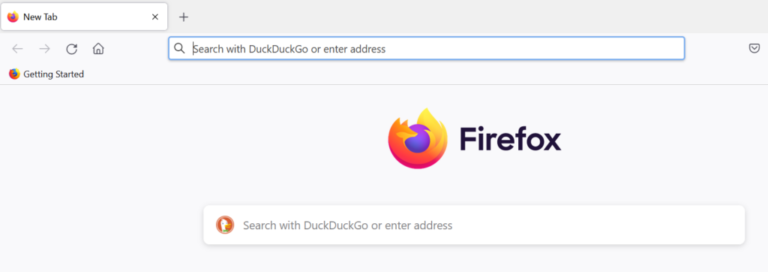In today’s hyper-competitive marketplace, customer-centricity is key to business success. Understanding who your customers are, what they want, and how they interact with your brand is more critical than ever.
A single customer view (SCV) offers the solution, providing businesses with a unified, 360-degree perspective of their customers. But what exactly is an SCV, and why is it essential for business growth? Let’s explore.
A Single Customer View is a holistic, unified profile of a customer that aggregates data from all interactions they’ve had with your business. It centralizes the customer’s contact details, purchase history, preferences, feedback, and engagement across channels. Rather than working with fragmented information scattered across multiple systems—such as CRM, email marketing platforms, and e-commerce data—an SCV presents all of it in one place.
The goal of a Single Customer View is to provide a complete, real-time understanding of each customer, making it easier to deliver personalized experiences, build stronger relationships, and streamline decision-making processes.
Key Components of a Single Customer View
Contents
-
Data Consolidation
- Pulls data from different systems (CRM, website analytics, email platforms, etc.).
- Unifies data across channels: online, offline, in-store, and customer service interactions.
-
Data Cleansing and Deduplication
- Removes duplicate or outdated customer records.
- Ensures data accuracy, improving the reliability of your insights.
-
Real-Time Updates
- Reflects the latest customer actions, purchases, or interactions.
- Helps the business respond promptly to changes in customer behavior.
-
Accessible Across Departments
- Allows marketing, sales, and customer service teams to view and act on the same customer profile.
- Eliminates silos and ensures alignment across departments.
Why Is a Single Customer View Critical for Business Growth?
Improved Personalization
Customers expect personalized experiences when engaging with brands. With an SCV, your business can tailor communications, offers, and recommendations based on individual preferences and behaviors. For example:
- E-commerce sites can suggest products based on previous purchases.
- Email campaigns can offer personalized discounts or product bundles.
Personalization boosts customer satisfaction and loyalty, leading to higher conversion rates and repeat purchases.
Enhanced Customer Retention and Loyalty
An SCV enables businesses to understand a customer’s lifecycle, including their habits, preferences, and pain points. With this knowledge, you can create strategies to retain customers, such as:
- Proactive support: Predict when customers might churn and offer incentives to stay.
- Loyalty programs: Offer rewards that match customers’ purchasing behavior.
Retaining existing customers is more cost-effective than acquiring new ones, making SCV an essential tool for sustainable growth.
Streamlined Marketing Campaigns
With customer data centralized in a Single Customer View, marketing teams can:
- Segment audiences more effectively.
- Create targeted campaigns based on behavioral data.
- Track multi-channel campaigns to understand what works best for specific audiences.
This reduces wasted ad spend and ensures that marketing efforts yield the highest possible return on investment (ROI).
Consistent Customer Experience Across Channels
Customers often switch between channels—like browsing online, chatting with support, and making purchases in-store. An SCV ensures that your business provides a consistent, seamless experience across all channels. For example, a customer service agent can access the customer’s purchase history and address issues quickly, creating a positive interaction.
A consistent experience builds trust and brand loyalty, which are essential for long-term growth.
Informed Decision-Making
An SCV delivers actionable insights, helping business leaders make data-driven decisions. With all the information consolidated into one view, it becomes easier to:
- Identify customer trends and behaviors.
- Forecast future demand and adjust inventory levels.
- Make strategic decisions that align with customer expectations.
Data-driven decision-making increases business efficiency and reduces risks associated with poor planning.
Improved Sales Performance
Sales teams can benefit from SCV by accessing comprehensive customer profiles. They can:
- Prioritize leads based on engagement and purchase history.
- Personalize their approach to match each customer’s preferences.
- Upsell and cross-sell more effectively, increasing average order value.
With access to real-time insights, sales teams can make better predictions and close deals faster.
Challenges of Implementing a Single Customer View
While the benefits are clear, implementing an SCV is not without challenges. Businesses may face:
-
Data Integration Issues
- Merging data from multiple systems can be complex, especially if they don’t communicate well with each other.
-
Data Privacy and Compliance
- Storing and using customer data must comply with privacy regulations, such as GDPR and CCPA.
-
High Implementation Costs
- Developing an SCV platform requires investment in software, infrastructure, and skilled personnel.
-
Data Quality Management
- Ensuring the accuracy and relevance of customer data requires continuous monitoring and updates.
How to Build an Effective Single Customer View
If your business is considering implementing an SCV, follow these steps to ensure success:
Choose the Right Technology
Look for a CRM or customer data platform (CDP) that integrates easily with your existing systems. The platform should support real-time data synchronization and offer customizable dashboards.
Set Clear Objectives
Identify the specific goals you want to achieve with SCV, such as improving customer retention or increasing cross-sell opportunities.
Ensure Data Quality
Invest in data cleansing tools to eliminate duplicates and maintain accurate records. A data governance strategy will ensure ongoing quality.
Involve All Departments
Encourage collaboration between sales, marketing, and customer service teams to ensure everyone uses the SCV effectively.
Monitor Performance and Optimize

Track how SCV impacts key metrics like customer satisfaction, sales, and marketing ROI. Use the data to optimize your strategies over time.
The Bottom Line
A Single Customer View (SCV) is an invaluable tool for businesses looking to grow and thrive in today’s customer-centric world. By consolidating customer data into one unified profile, SCV enables businesses to personalize experiences, increase customer loyalty, streamline marketing efforts, and improve sales performance. However, implementing an SCV requires careful planning, the right technology, and a commitment to data quality.
Despite the challenges, the benefits far outweigh the effort. With an effective SCV strategy in place, your business can stay ahead of the competition, meet evolving customer expectations, and drive long-term growth. Now is the time to start building your Single Customer View and unlock the full potential of your customer relationships.





